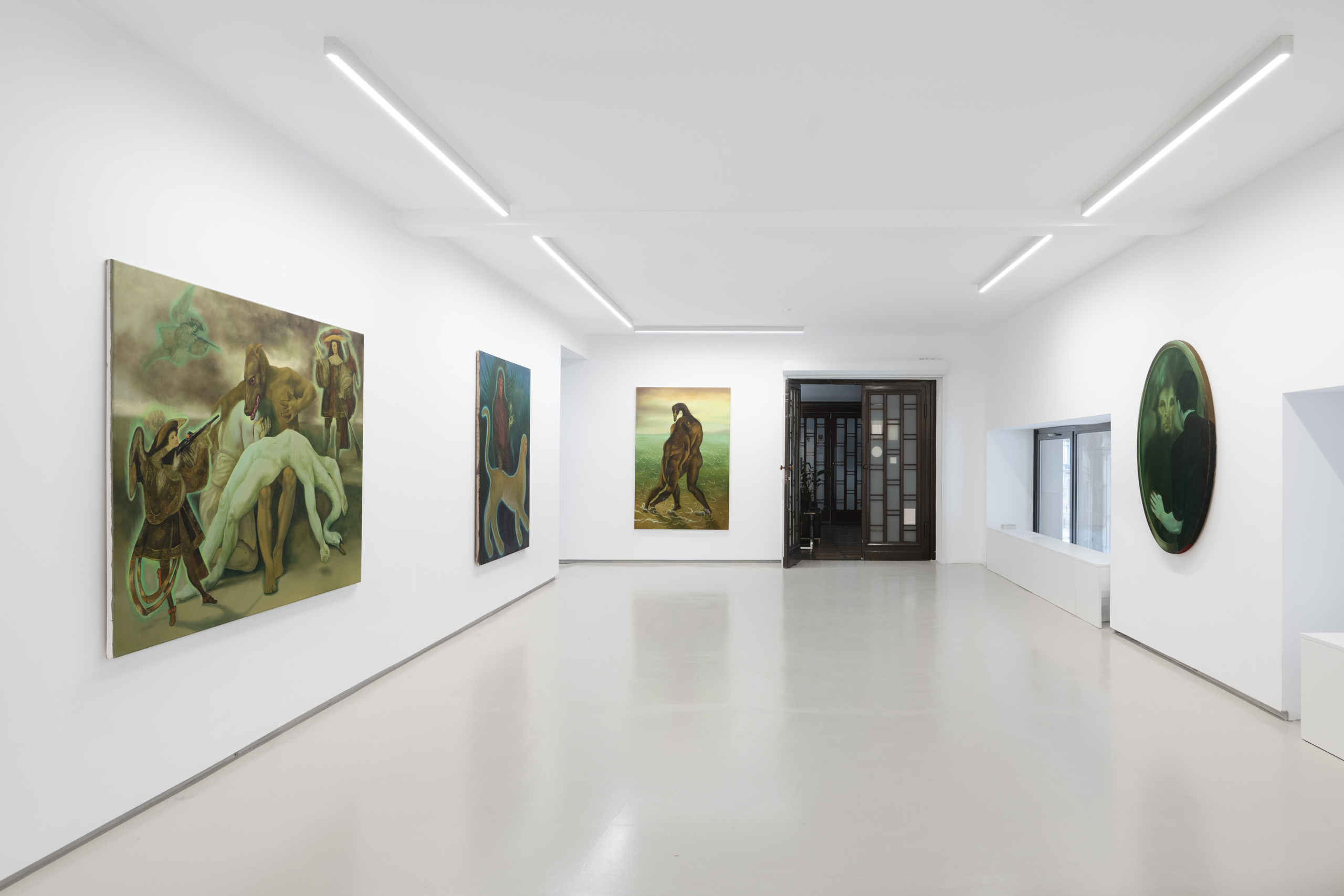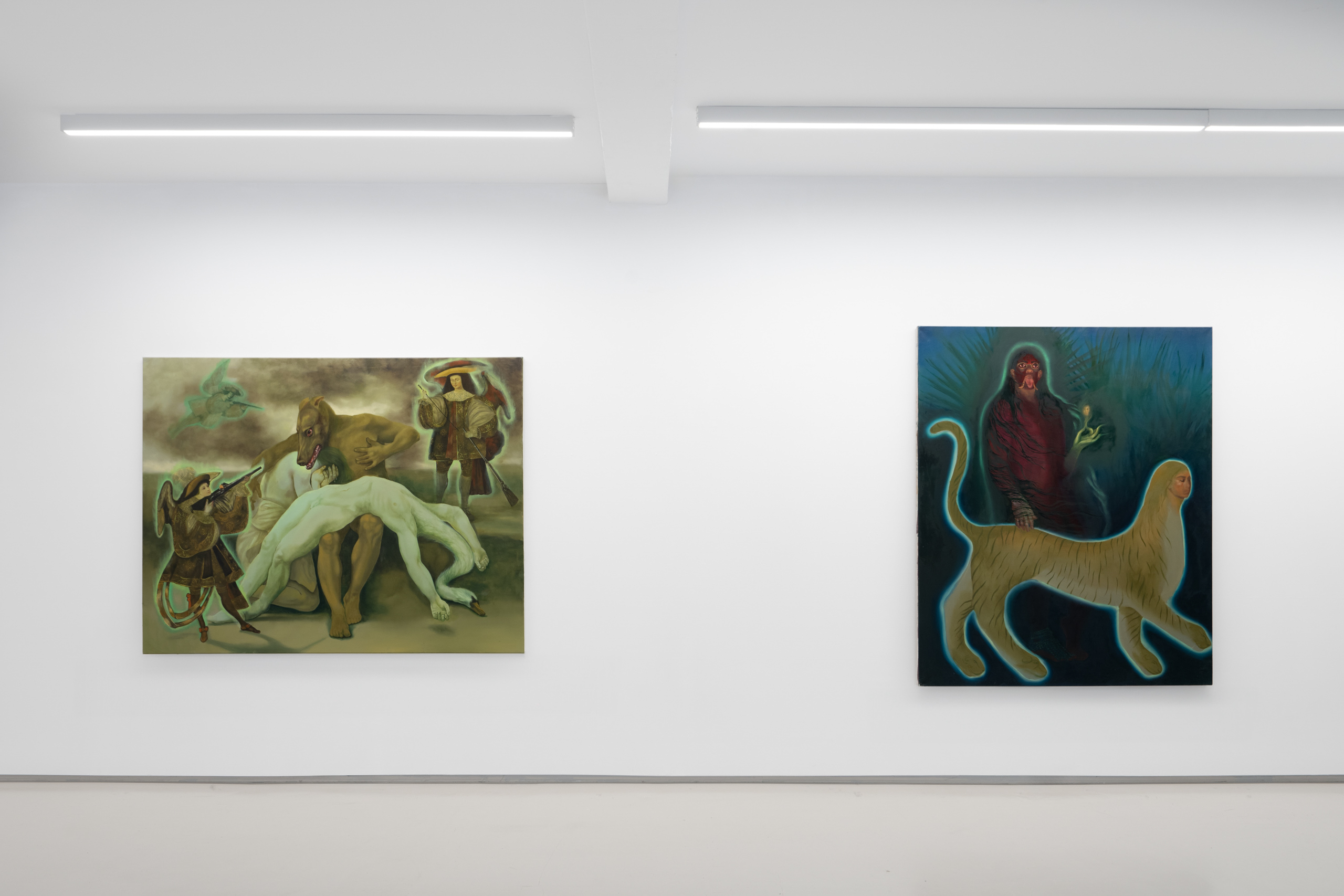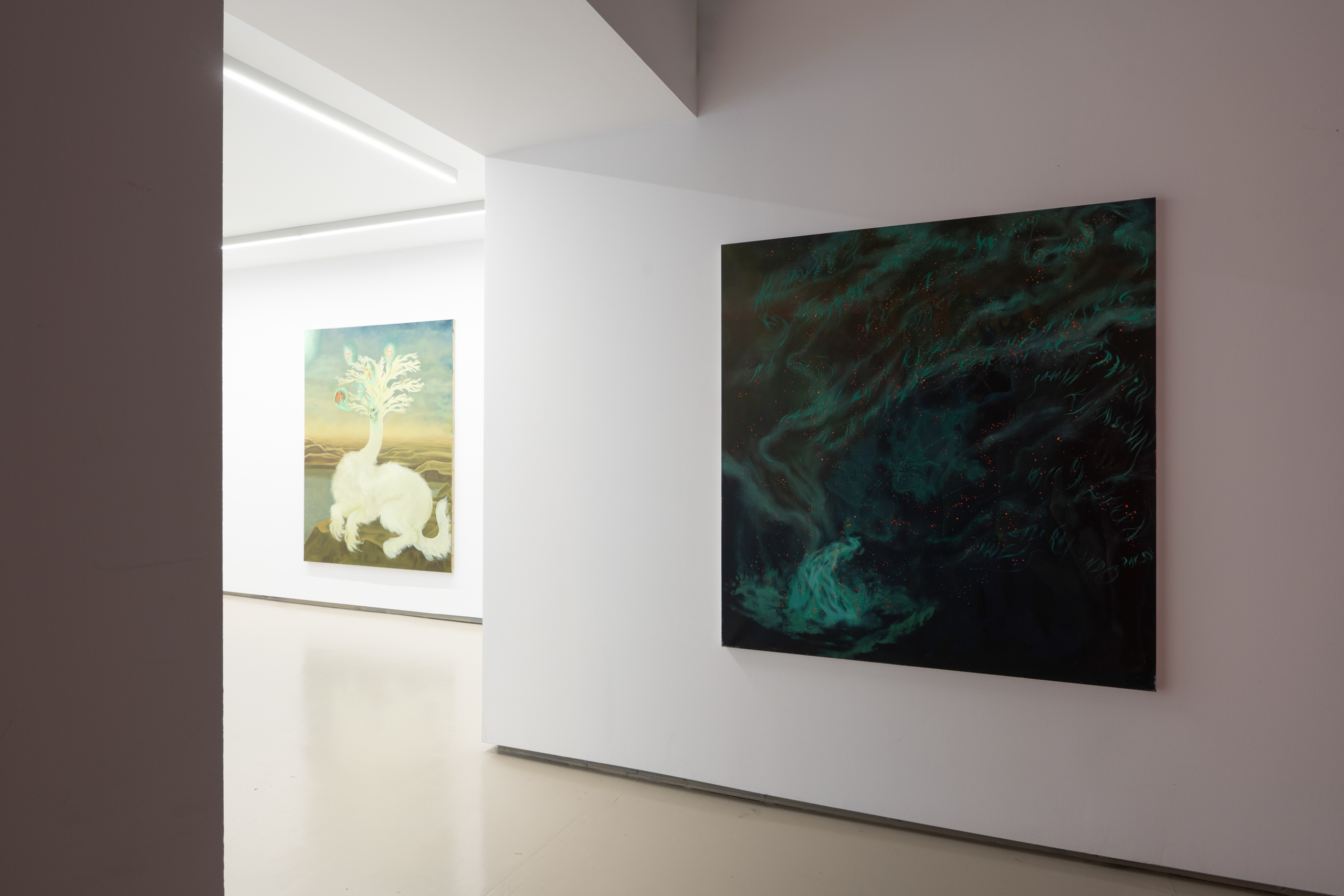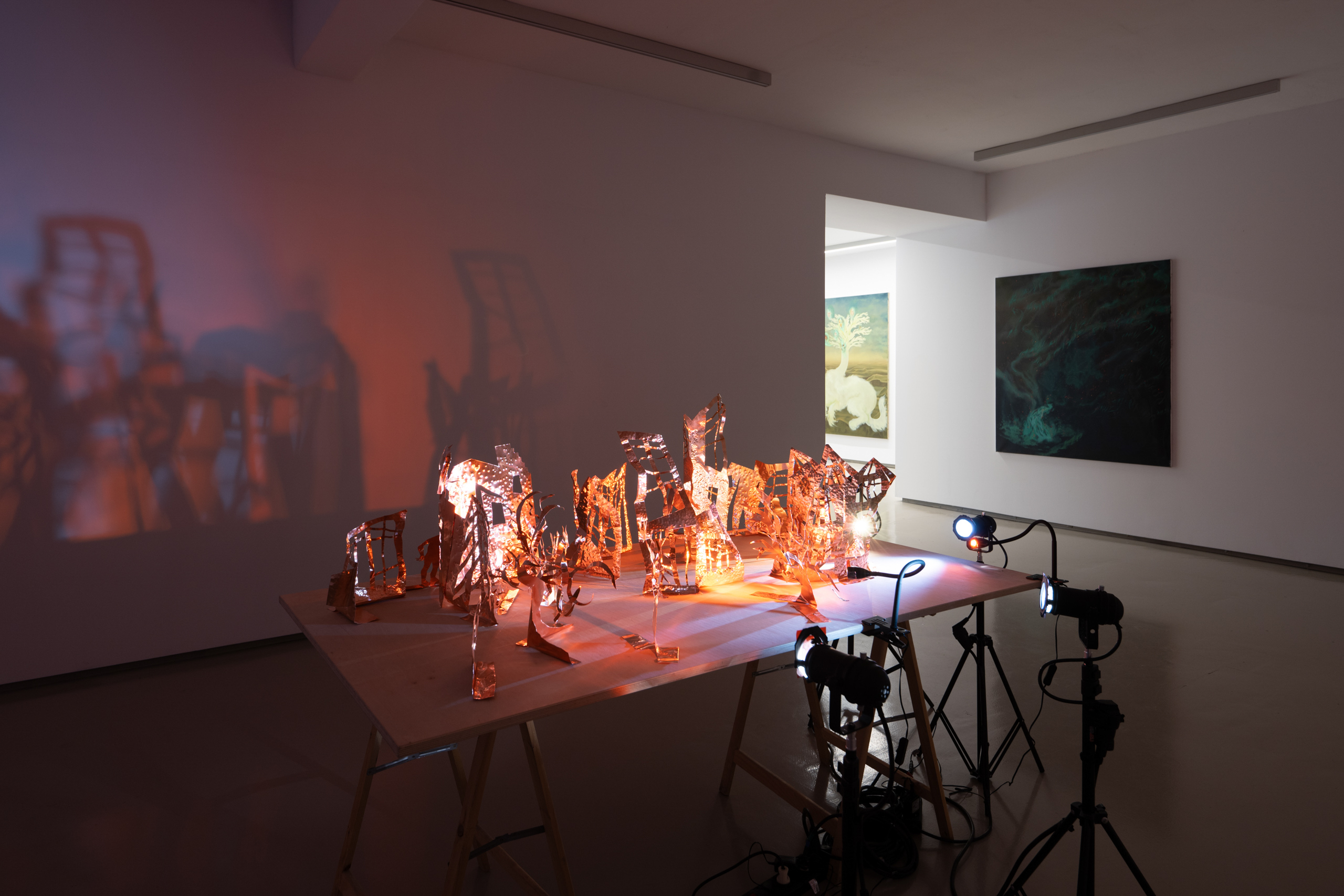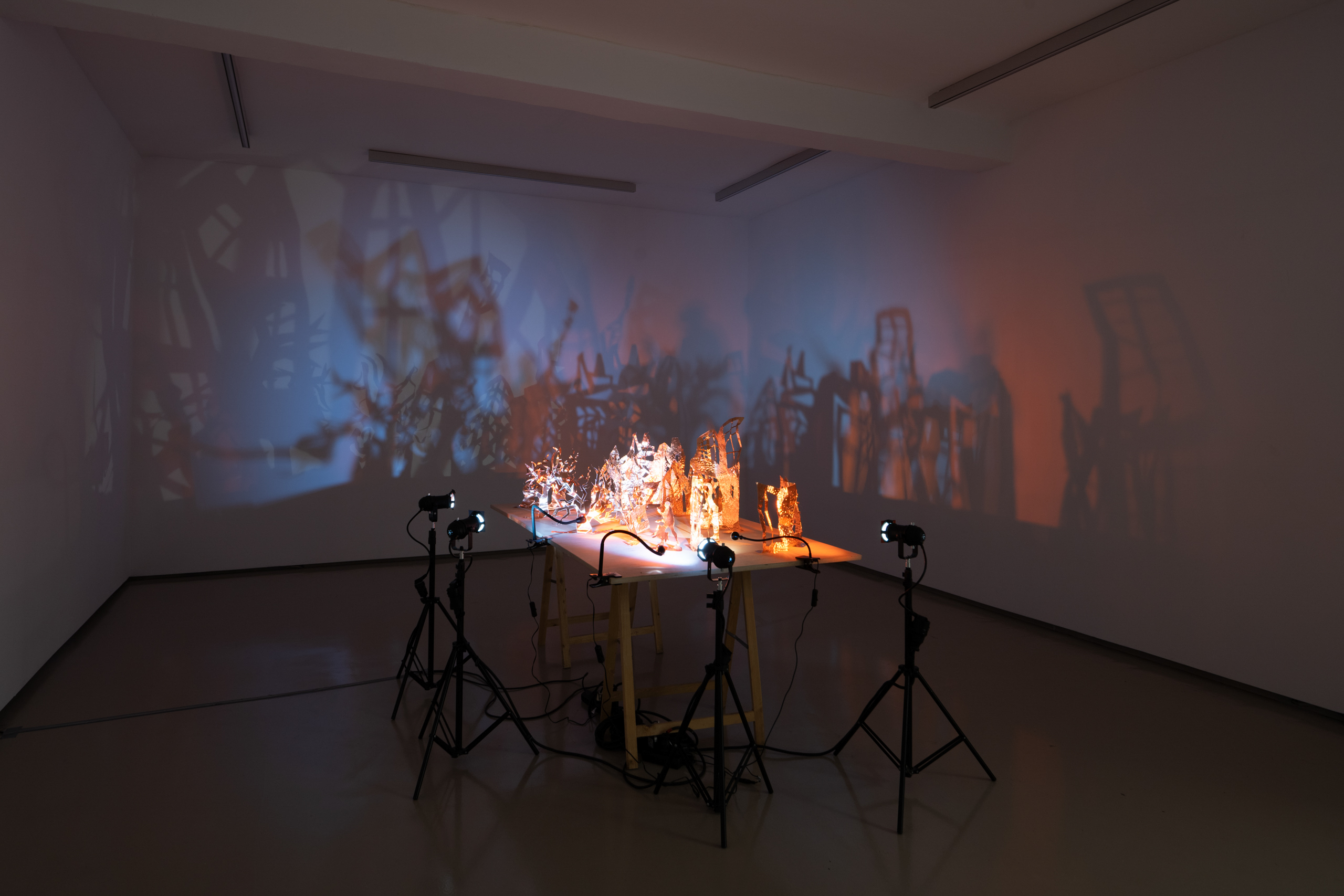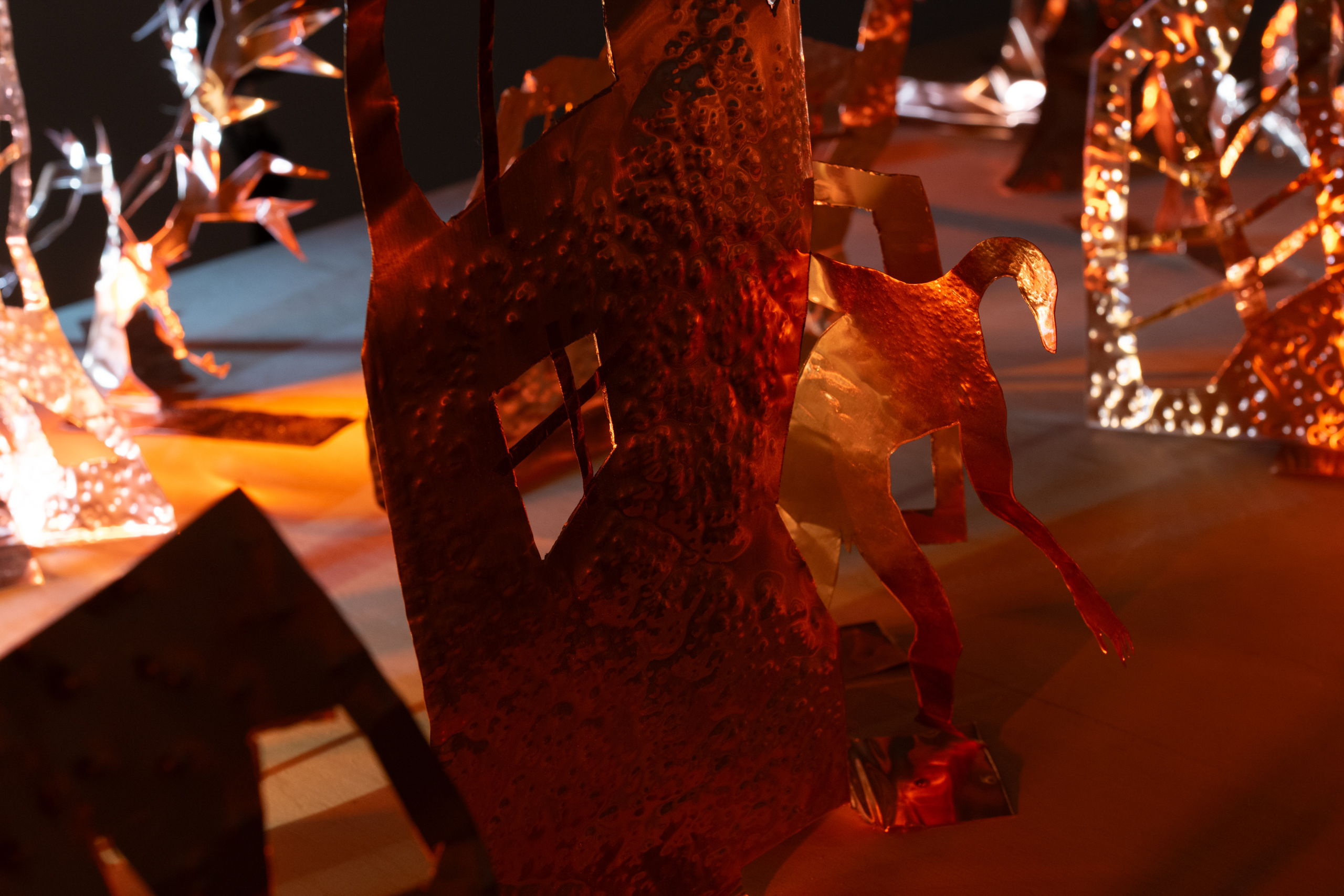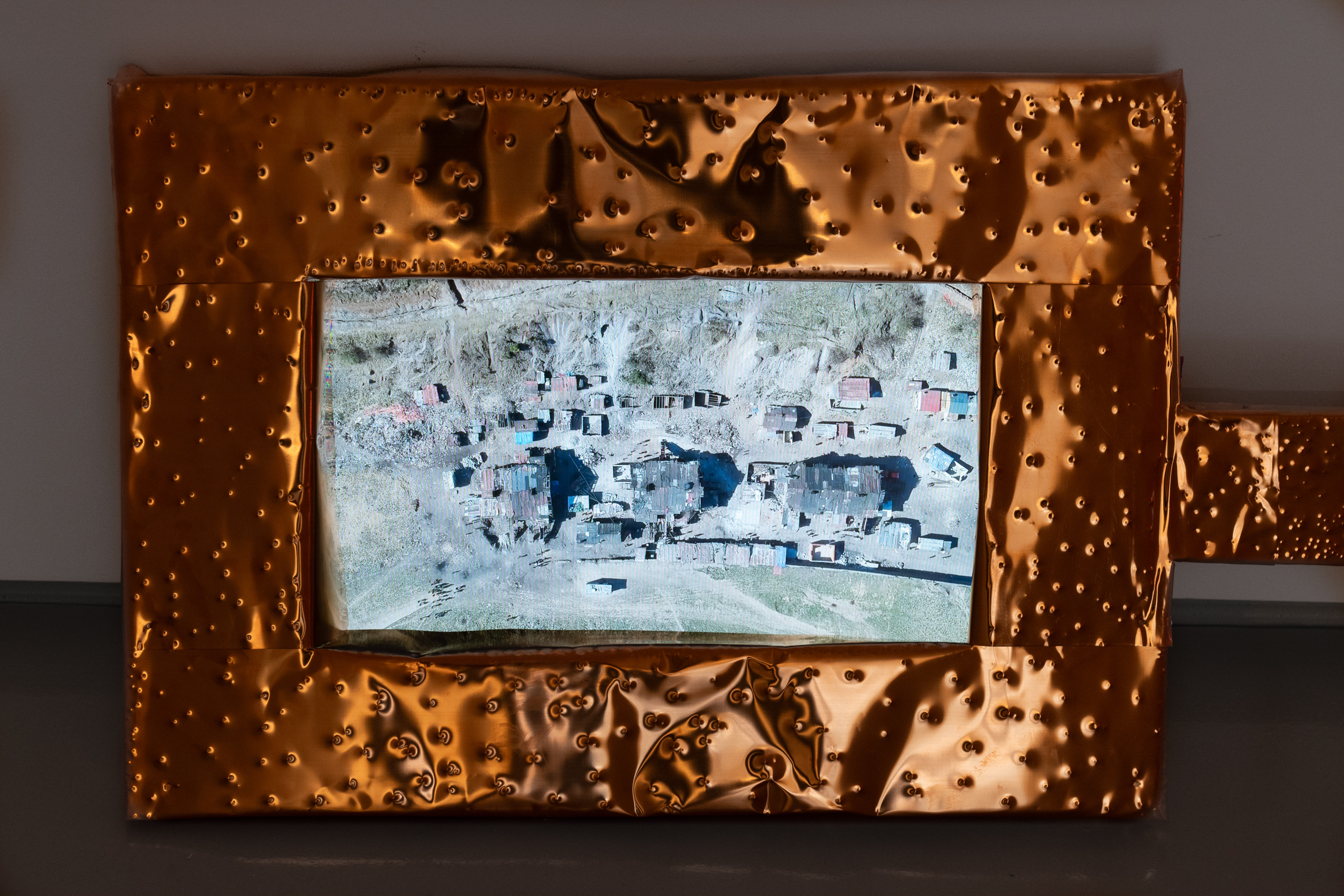Krzysztof Gil
Black Night in the White of Day
February 17 – March 29, 2024
The exhibition Black Night in the White of Day, featuring Krzysztof Gil’s works, is his first solo presentation held at Galeria Monopol. It comprises paintings, sculptures and installations. The multitude of techniques, motifs, and stories found in Gil’s work makes his exhibitions closer to visual essays than to individual shows of recent works.
In his latest pieces, the artist focuses on the notion of race, emphasising a period in history when this category had not yet been constituted. He refers to the cultures of the Global South, mythology, art history, and capitalism to weave together general threads into individual stories or intertextual narratives. The protagonists of his pictures are usually hybrids. Krzysztof Gil combines human bodies with the heads of dogs, swans, or the other way round – the bodies of cats are given human faces. Their original function in ancient beliefs was ambivalent: on the one hand, they reflected awe-inspiring superhuman power; on the other, they sowed terror and anxiety. Apart from alluding to mythological figures, the hybrids also have a hidden meaning as they serve as a metaphor of the “Other” for the artist. Exploring the etymology of the word, we find that hybride in French and German originally meant a descendant of parents with different origins. The collage of bodies and motifs taken from history and various cultures reflects the artist’s primary interests. It is a transhistorical story about the past, prejudices, and the ways of representing minorities, which also attempts to explain the current times in all their chaos, entanglement, and complexity.
The exhibition displays the film entitled Social Murder as well, made by the Czech-Slovak-Austrian art group Averklub Collective. It documents the settlement of Zabíjanec in the village of Rudňany, located in the Slovak Vepor Mountains. The image of the realities of living in abject poverty was juxtaposed with a reading of an extract from The Condition of the Working Class in England written by Friedrich Engels in 1844. Through the gesture of including a separate work in the exhibition, the artist continues his argument, enriching it with further perspectives that transcend the linear course of time. Supported by the work of other creators, he develops themes addressed in his own work and raises the question as to whether divisions can be overcome and every human being, irrespective of his or her background, can lead a dignified life.
Franciszek Smoręda
